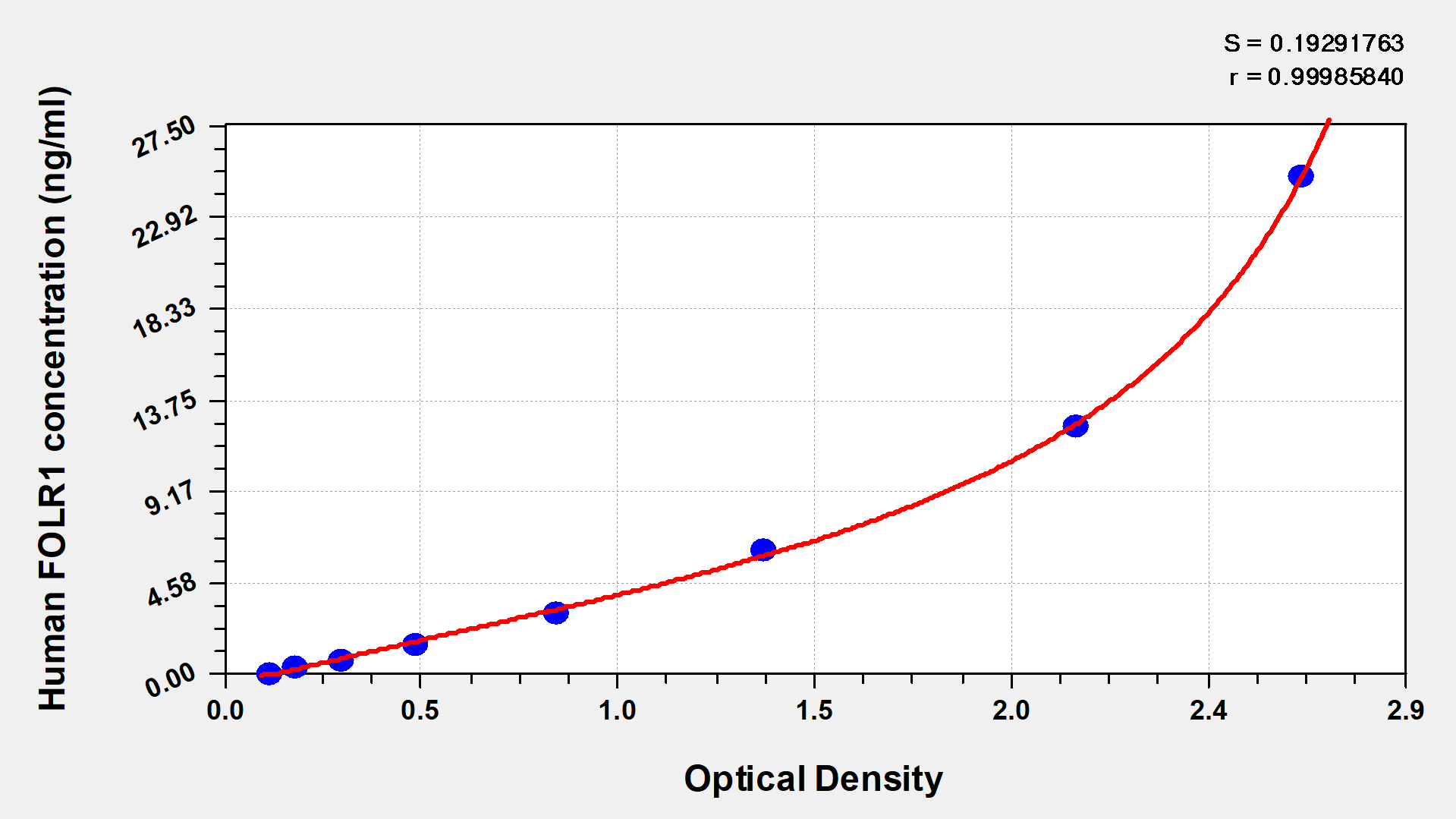CUSABIO's human FOLR1 ELISA kit is an in vitro enzyme-linked immunosorbent assay for quantitatively measuring human FOLR1 in serum, plasma, or tissue homogenates. This assay uses the sandwich enzyme immunoassay technique in combination with the enzyme-substrate chromogenic reaction to quantify the analyte in the sample. The color develops positively to the amount of FOLR1 in samples. The color intensity is measured at 450 nm via a microplate reader.
FOLR1 is a glycosylphosphatidylinositol-linked protein that mediates cellular responses to folate, including cell division, proliferation, and tissue growth. FOLR1 binds folic acid and its reduced derivatives and is the transporter for 5-methyltetrahydrofolate into cells. It is involved in DNA replication and damage repair. FOLR1 is overexpressed in various epithelial malignancies including ovarian, breast, renal, and lung cancers. The overexpression of FOLR1 is often related to increased cancer progression and poor patient prognosis.






